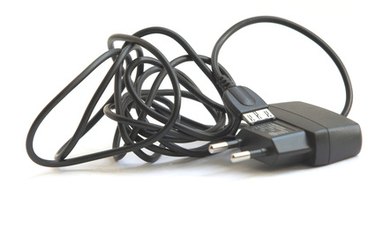
While most plug-in electrical appliances are designed to run on alternating current (AC) power, batteries and emergency generators produce direct current (DC) power. To convert the DC output into AC power, you need to connect a power inverter to the DC source and then plug the appliance in to the inverter's socket. However, the published power rating for an inverter (in watts) refers to the maximum amount of electrical power it can draw from the DC source. Only a fraction of this DC power is converted into AC power for the appliance. To calculate the published power rating you need, you must determine the total load for the AC circuit (i.e., the plug-in appliance) and then divide it by the inverter's efficiency.
Step 1
Determine the power consumption (in watts) for each of the appliances you plan to simultaneously power with the inverter's AC output. To find this value, check for tags on the appliance's plug or adapter box. If you cannot find it there, try checking the "Technical Specifications" section in the owner's manual. Note: downloadable PDF's of these manuals are usually available from the manufacturer's website.
Video of the Day
Step 2
Add together all of the power ratings from step 1. This represents the total output power required.
Step 3
Multiply the total power required by 1.25. Doing so is designed to create a buffer that will protect the inverter against power surges. Call this new value the "minimum safe output."
Step 4
Round the result from step 3 up to the nearest 100.
Step 5
Determine the power factor (PF) for an inverter with a power rating equal to the value from step 4. To find the inverter's PF, download the model's owner's manual from the manufacturer's website and search in the "Technical Specifications" section. Note: in some manuals, the term "efficiency" might be used instead of "power factor." Regardless, the underlying value is the same.
Step 6
Multiply the power factor by the inverter's nominal power rating (from step 4). If the result is higher than the minimum safe output (from step 3), then the inverter can produce sufficient power for the appliances. If the result is lower than the minimum safe output, repeat step 5 and step 6 for an inverter with the next highest nominal power rating. Repeat until you reach an inverter with sufficient power output.
Video of the Day